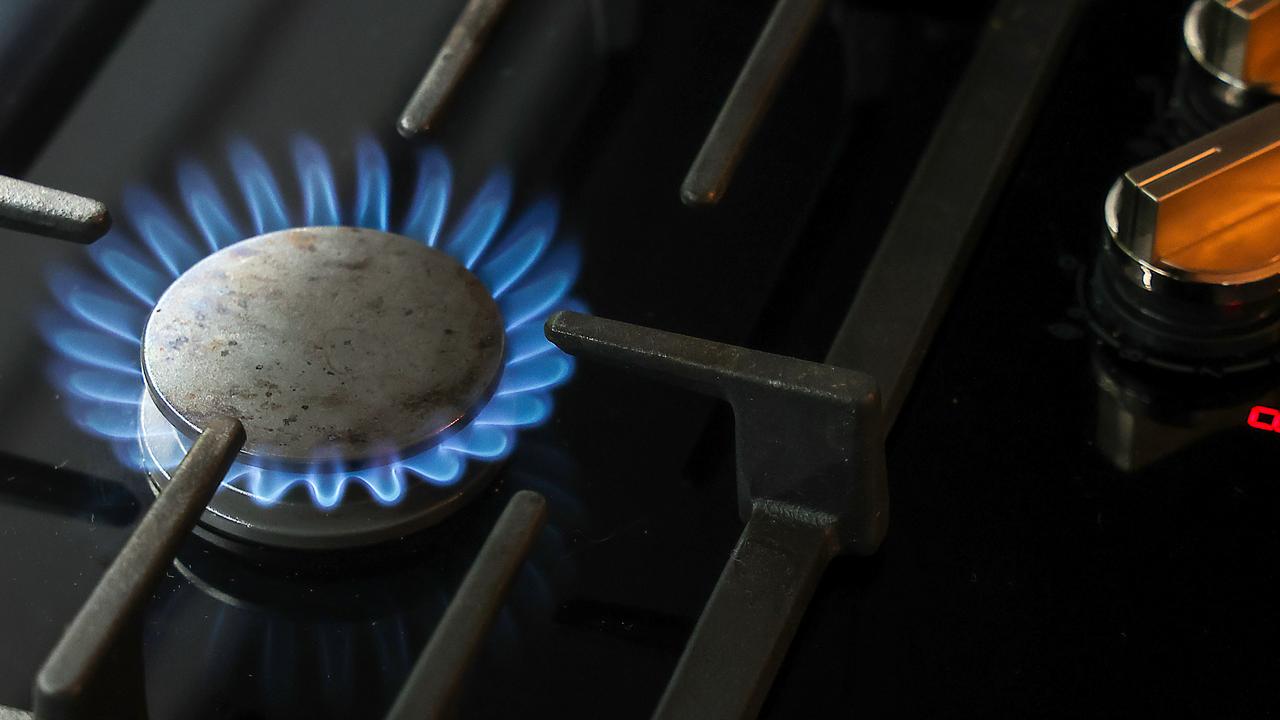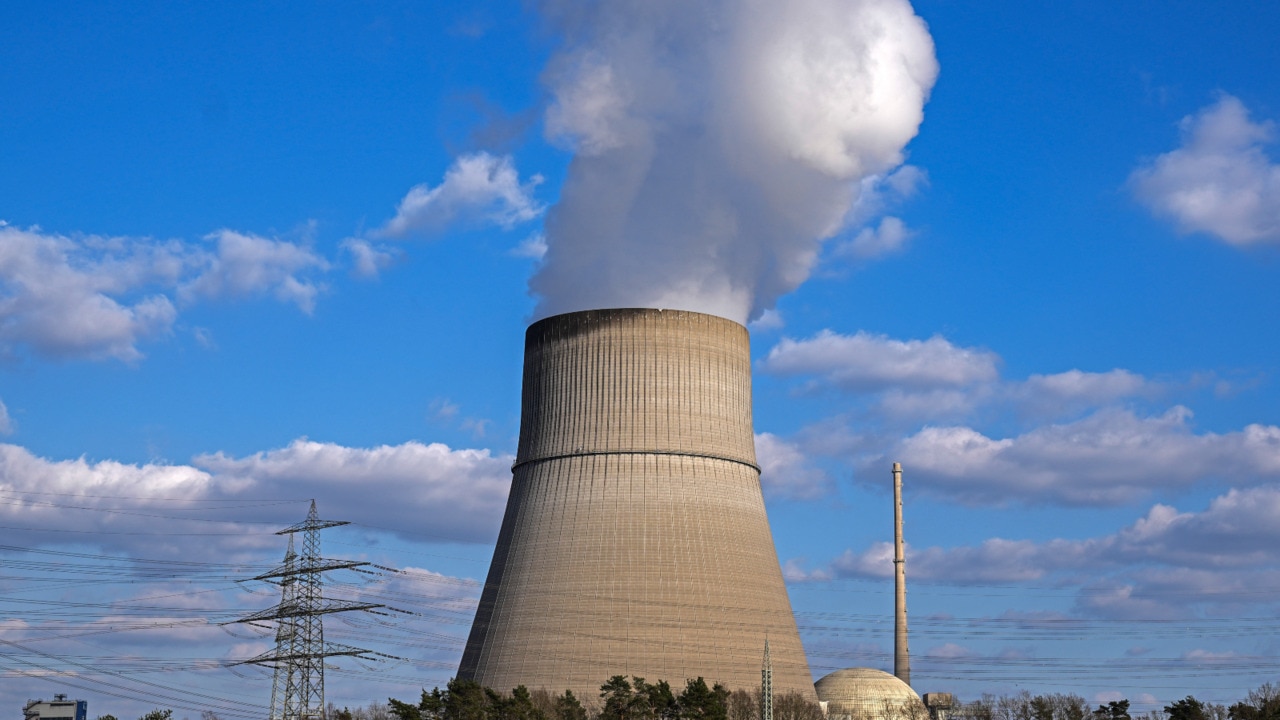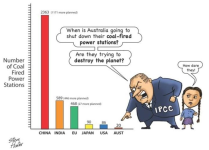Bluey
Senior Member
- Joined
- 1 Nov 2008
- Messages
- 3,822
- Reaction score
- 1,746
Why is it ok for us to dig up and sell coal for others to use but its Taboo for us to use our own coal or gas..
##################
Victoria’s main gas facility to run out by end of winter as wind farm output slumps to five-year low

Victoria’s main gas storage plant is set to run out by the end of winter. Picture: NCA NewsWire / Ian Currie
As the political battle rages over energy policy, there is also concern about supplies from the country’s wind farms, with output slumping to a five-year low.
The east coast was last week plunged into a fresh energy emergency amid warnings of gas shortages after supply disruptions and a winter cold snap triggered a run on reserves.
The Australian can reveal that the energy regulator cautioned the industry that the largest supplier of gas storage on the east coast, Lochard Energy’s Iona facility in northeast Victoria, could run out of gas before the end of winter.
The Australian Energy Market Operator told industry and gas users on Thursday that the drawdown from the Iona facility needed to be halved from about 400 terajoules a day to an average of 200 to avoid it running dry.
The situation has also triggered a warning from Orica, one of Australia’s biggest gas users, which said it faced a decision over cutting production and jobs at its Newcastle plant unless conditions in the gas market improved.
Orica is a major supplier of explosives to the mining industry but said it might be forced to import ammonia for its Kooragang Island manufacturing plant in Newcastle in the next few years if not enough affordable gas was available.
German Morales, Orica’s president for Australia Pacific and sustainability, told The Australian that “there is not enough gas and there is not affordable gas”.
“Clearly if we fail to secure long-term gas at a reasonable market price, we may be put in a position of rethinking what is the manufacturing strategy for ammonia in Australia,” he said.
“The Australian gas price is significantly more expensive than that you can buy in other jurisdictions, such as the US. That’s making it very difficult to justify manufacturing in Australia.”
With the energy crisis due to dominate parliament on Monday, former Labor prime minister Paul Keating swung in to attack Peter Dutton’s plan to build seven nuclear reactors around the country, saying it was an “industrial fantasy” and the “most lethal technology of another age”.
“Only the most wicked and cynical of individuals would foist such a blight on an earnest community like Australia – a community which fundamentally believes in truth and decency and which relies on its political system to advance those ideals,” he said.
The Opposition Leader labelled Mr Keating’s remarks a “petulant outburst” that would further undermine the national interest, and ignored claims that Labor’s all-renewables policy could cost $1.3 trillion to rewire the electricity grid.

Crawford School of Public Policy Professor Warwick McKibbin says Australia needs a “comprehensive report” on nuclear before it is implemented as it is a “big step to take”. Opposition leader Peter Dutton announced the Coalition’s nuclear plan last week. “I think the cost advantage has moved towards renewables since we More
“Even Prime Minister (Anthony) Albanese acknowledged that Mr Keating’s recent ramblings on international affairs were ‘unfortunate’,” Mr Dutton said. “Mr Keating’s statement (on Sunday) is no different. This petulant outburst from a man who criticises AUKUS just undermines our national interest.”
The exchange came as consultancy group WattClarity said the yield from major wind farms across the national electricity market was easily the worst in the past five years.
It said the capacity factor, the share of actual electricity generated by a plant, was at just 21 per cent for the year as of June 22.
“2024 might be as much as 3,000,000 megawatt hours ‘short’ of wind production through the second quarter compared to what some might have expected,” WattClarity’s Paul McArdle said.
The political debate on Mr Dutton’s nuclear push focused on cost on Sunday, with Nationals leader David Littleproud failing to rebut Labor’s claim that the Coalition’s energy policy could cost as much as $387bn, arguing it would still be cheaper than the government’s plan to rewire the grid for the renewable transition.
The Coalition also revealed more than one reactor could be built on each identified site, but it is unlikely to reveal the exact amount of electricity to come from the plan before the election.
After Environment Minister Tanya Plibersek claimed the Coalition’s plan could cost $387bn, Mr Littleproud said: “Well, that’d be a fraction of what their plan by 2030 of 82 per cent renewables would cost.”

Nationals leader David Littleproud has called out the Albanese government for its “ideological view” on energy policy which “doesn’t match the reality”. Opposition Leader Peter Dutton announced the Coalition’s nuclear plan last week. “It simply can’t be done anywhere around the world,” Mr Littleproud told Sky News Political Editor Andrew More
Mr Littleproud accepted the CSIRO’s estimate that each reactor would cost $8.6bn to build, saying the Coalition had been upfront that the figure was “in the ballpark”.
“We’ve been more than upfront saying that is in the ballpark, but we’ll be very specific about those costs and those upfront costs,” he told Sky News.
“We’ve also been upfront about who owns this, not some carpetbagger from overseas comes in, takes it all and runs back for a 15 to 20-year period.
“This will be something that lasts for 80 to 100 years.”
Opposition energy spokesman Ted O’Brien said an independent nuclear body would determine how many reactors would be located at each site, as well as what technology was feasible.
He conceded that voters would not know the exact capacity of the plants down to the gigawatt until after the election.
“The independent bodies would look at each plant and come up with a recommendation as to what sort of technology should be used, and from there, it would be exactly what capacity based on that technology,” he told the ABC’s Insiders.
Ms Plibersek criticised Mr Dutton’s nuclear plan for being too expensive, and accused him of seeking to “slam the brakes on” Australia’s progress towards becoming a “renewable superpower”. “If Peter Dutton doesn’t agree with the costs that are out there, he should provide his own costs,” she said. “He’s saying to Australians, I don’t trust you. I don’t trust you with the costings we’ve done.”
##################
Victoria’s main gas facility to run out by end of winter as wind farm output slumps to five-year low

Victoria’s main gas storage plant is set to run out by the end of winter. Picture: NCA NewsWire / Ian Currie
- By PERRY WILLIAMS The Australian
and RHIANNON DOWN
REPORTER - 10:07PM JUNE 23, 2024
As the political battle rages over energy policy, there is also concern about supplies from the country’s wind farms, with output slumping to a five-year low.
The east coast was last week plunged into a fresh energy emergency amid warnings of gas shortages after supply disruptions and a winter cold snap triggered a run on reserves.
The Australian can reveal that the energy regulator cautioned the industry that the largest supplier of gas storage on the east coast, Lochard Energy’s Iona facility in northeast Victoria, could run out of gas before the end of winter.
The Australian Energy Market Operator told industry and gas users on Thursday that the drawdown from the Iona facility needed to be halved from about 400 terajoules a day to an average of 200 to avoid it running dry.
The situation has also triggered a warning from Orica, one of Australia’s biggest gas users, which said it faced a decision over cutting production and jobs at its Newcastle plant unless conditions in the gas market improved.
Orica is a major supplier of explosives to the mining industry but said it might be forced to import ammonia for its Kooragang Island manufacturing plant in Newcastle in the next few years if not enough affordable gas was available.
German Morales, Orica’s president for Australia Pacific and sustainability, told The Australian that “there is not enough gas and there is not affordable gas”.
“Clearly if we fail to secure long-term gas at a reasonable market price, we may be put in a position of rethinking what is the manufacturing strategy for ammonia in Australia,” he said.
“The Australian gas price is significantly more expensive than that you can buy in other jurisdictions, such as the US. That’s making it very difficult to justify manufacturing in Australia.”
With the energy crisis due to dominate parliament on Monday, former Labor prime minister Paul Keating swung in to attack Peter Dutton’s plan to build seven nuclear reactors around the country, saying it was an “industrial fantasy” and the “most lethal technology of another age”.
“Only the most wicked and cynical of individuals would foist such a blight on an earnest community like Australia – a community which fundamentally believes in truth and decency and which relies on its political system to advance those ideals,” he said.
The Opposition Leader labelled Mr Keating’s remarks a “petulant outburst” that would further undermine the national interest, and ignored claims that Labor’s all-renewables policy could cost $1.3 trillion to rewire the electricity grid.

| Column 1 | Column 2 |
|---|---|
| THEAUSTRALIAN.COM.AU05:14Nuclear a ‘big step to take’ for Australia |
“Even Prime Minister (Anthony) Albanese acknowledged that Mr Keating’s recent ramblings on international affairs were ‘unfortunate’,” Mr Dutton said. “Mr Keating’s statement (on Sunday) is no different. This petulant outburst from a man who criticises AUKUS just undermines our national interest.”
The exchange came as consultancy group WattClarity said the yield from major wind farms across the national electricity market was easily the worst in the past five years.
It said the capacity factor, the share of actual electricity generated by a plant, was at just 21 per cent for the year as of June 22.
“2024 might be as much as 3,000,000 megawatt hours ‘short’ of wind production through the second quarter compared to what some might have expected,” WattClarity’s Paul McArdle said.
The political debate on Mr Dutton’s nuclear push focused on cost on Sunday, with Nationals leader David Littleproud failing to rebut Labor’s claim that the Coalition’s energy policy could cost as much as $387bn, arguing it would still be cheaper than the government’s plan to rewire the grid for the renewable transition.
The Coalition also revealed more than one reactor could be built on each identified site, but it is unlikely to reveal the exact amount of electricity to come from the plan before the election.
After Environment Minister Tanya Plibersek claimed the Coalition’s plan could cost $387bn, Mr Littleproud said: “Well, that’d be a fraction of what their plan by 2030 of 82 per cent renewables would cost.”

| Column 1 | Column 2 |
|---|---|
| THEAUSTRALIAN.COM.AU04:56Labor’s ‘ideological view’ on energy ‘doesn’t match reality’: David Littleproud |
Mr Littleproud accepted the CSIRO’s estimate that each reactor would cost $8.6bn to build, saying the Coalition had been upfront that the figure was “in the ballpark”.
“We’ve been more than upfront saying that is in the ballpark, but we’ll be very specific about those costs and those upfront costs,” he told Sky News.
“We’ve also been upfront about who owns this, not some carpetbagger from overseas comes in, takes it all and runs back for a 15 to 20-year period.
“This will be something that lasts for 80 to 100 years.”
Opposition energy spokesman Ted O’Brien said an independent nuclear body would determine how many reactors would be located at each site, as well as what technology was feasible.
He conceded that voters would not know the exact capacity of the plants down to the gigawatt until after the election.
“The independent bodies would look at each plant and come up with a recommendation as to what sort of technology should be used, and from there, it would be exactly what capacity based on that technology,” he told the ABC’s Insiders.
Ms Plibersek criticised Mr Dutton’s nuclear plan for being too expensive, and accused him of seeking to “slam the brakes on” Australia’s progress towards becoming a “renewable superpower”. “If Peter Dutton doesn’t agree with the costs that are out there, he should provide his own costs,” she said. “He’s saying to Australians, I don’t trust you. I don’t trust you with the costings we’ve done.”


